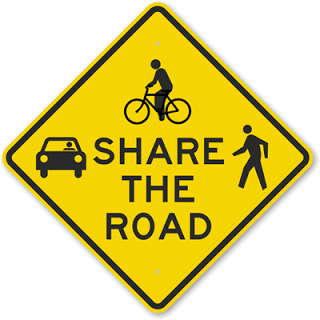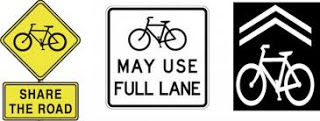Summary of "'Share the Road' Signs Don’t Work"
- Catie Willett
- Sep 22, 2016
- 2 min read
In an article from Streets Blog USA, author Tanya Snyder explains how Delaware recently stopped using the classic "Share The Road" sign, that was used to indicate to drivers and cyclists that bike riders have the same right to the road as cars.

Instead of this sign, which appears polite and rather ambiguous in terms of explaining cyclist road use, Delaware is now using a more explicit sign that reads "May Use Full Lane" that includes a picture of a bike.

In order to see if the change of signs was effective, researchers took to Twitter to run a poll in order to gather individual's understanding of each sign. Within the poll, researchers asked whether the "Share the Road" sign, "May Use Full Lane" sign, or a "sharrow" was the most effective at explaining a cyclist's right to the road.
Which worked best?

According to the results, the previous sign recommending street-users to "Share the Road" was not indicative at all that cyclists could use a full lane of traffic. Instead, individuals better understood cyclists have the right to occupy a full lane on both two-lane roads and four-lane roads from a "May Use Full Lane" sign or a sharrow. The most effective sign, however, was concluded to be the "May Use Full Lane" as it expressly illustrates the rule of law regarding cyclist traffic laws.
Signs that explicitly articulate road safety and particular laws are, personally, the most effective. Most individuals struggle remembering the different rules and regulations that are associated with each sign. Although passing a "signs" test is mandatory for obtaining your driver's license in Virginia, many individuals fail this portion - which ultimately increases the time it takes to obtain your license. In order for more individuals to drive safely and remember street rules (and manners) explicit language on signs is more effective than generic symbols that can read interpretively.
Comments